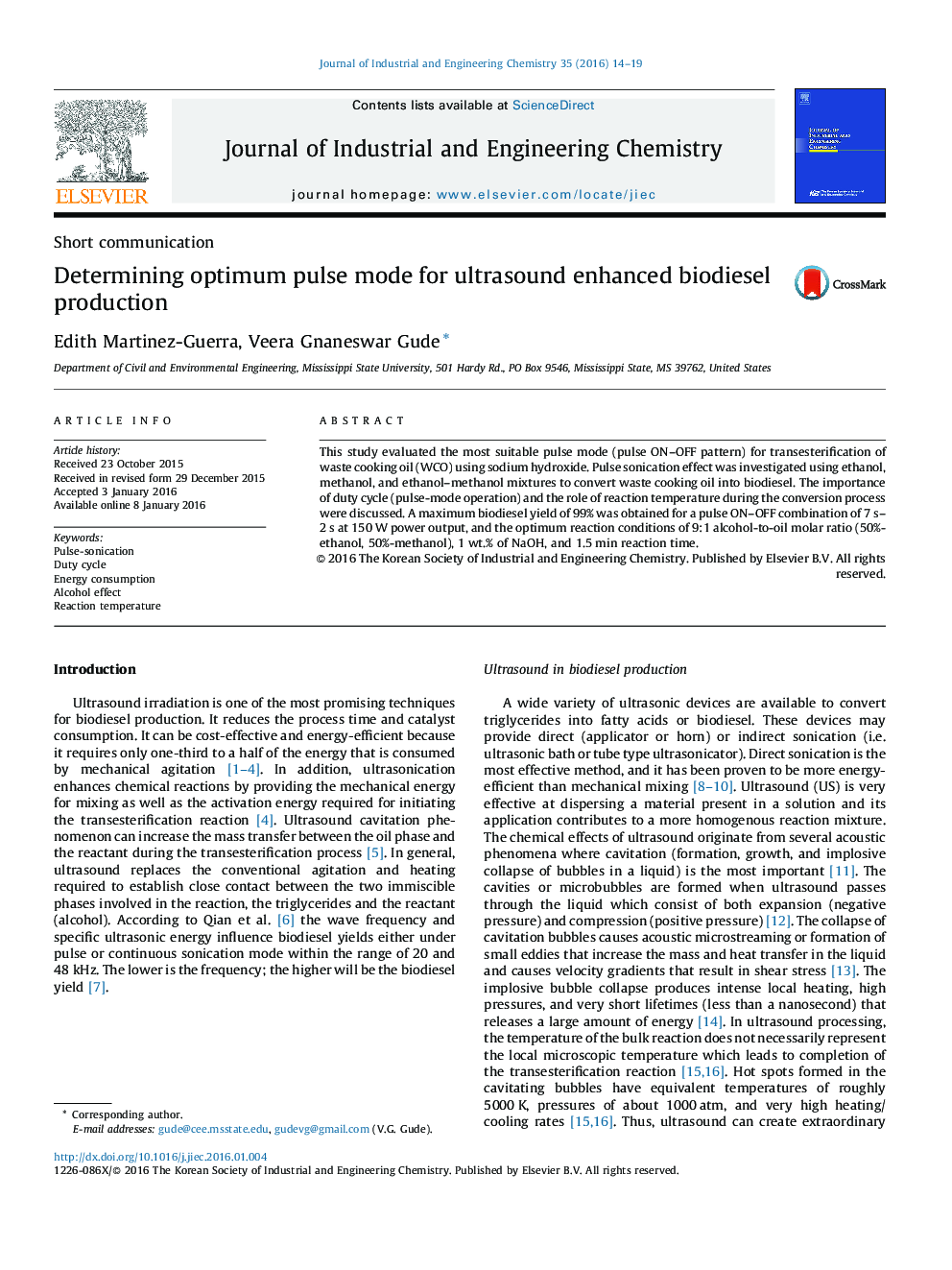| Article ID | Journal | Published Year | Pages | File Type |
|---|---|---|---|---|
| 227920 | Journal of Industrial and Engineering Chemistry | 2016 | 6 Pages |
•Effect of pulse sonication in transesterification of used vegetable oil was studied.•7 s ON/2 s OFF pulse mode resulted in a maximum biodiesel conversion of 99%.•Ethanol–methanol mixture provides high quality and quantity biodiesel.•Avoiding alcohol boiling temperatures may improve biodiesel yield.•Duty cycle is less important when compared to the optimum pulse mode operation.
This study evaluated the most suitable pulse mode (pulse ON–OFF pattern) for transesterification of waste cooking oil (WCO) using sodium hydroxide. Pulse sonication effect was investigated using ethanol, methanol, and ethanol–methanol mixtures to convert waste cooking oil into biodiesel. The importance of duty cycle (pulse-mode operation) and the role of reaction temperature during the conversion process were discussed. A maximum biodiesel yield of 99% was obtained for a pulse ON–OFF combination of 7 s–2 s at 150 W power output, and the optimum reaction conditions of 9:1 alcohol-to-oil molar ratio (50%-ethanol, 50%-methanol), 1 wt.% of NaOH, and 1.5 min reaction time.
Graphical abstractFigure optionsDownload full-size imageDownload as PowerPoint slide
